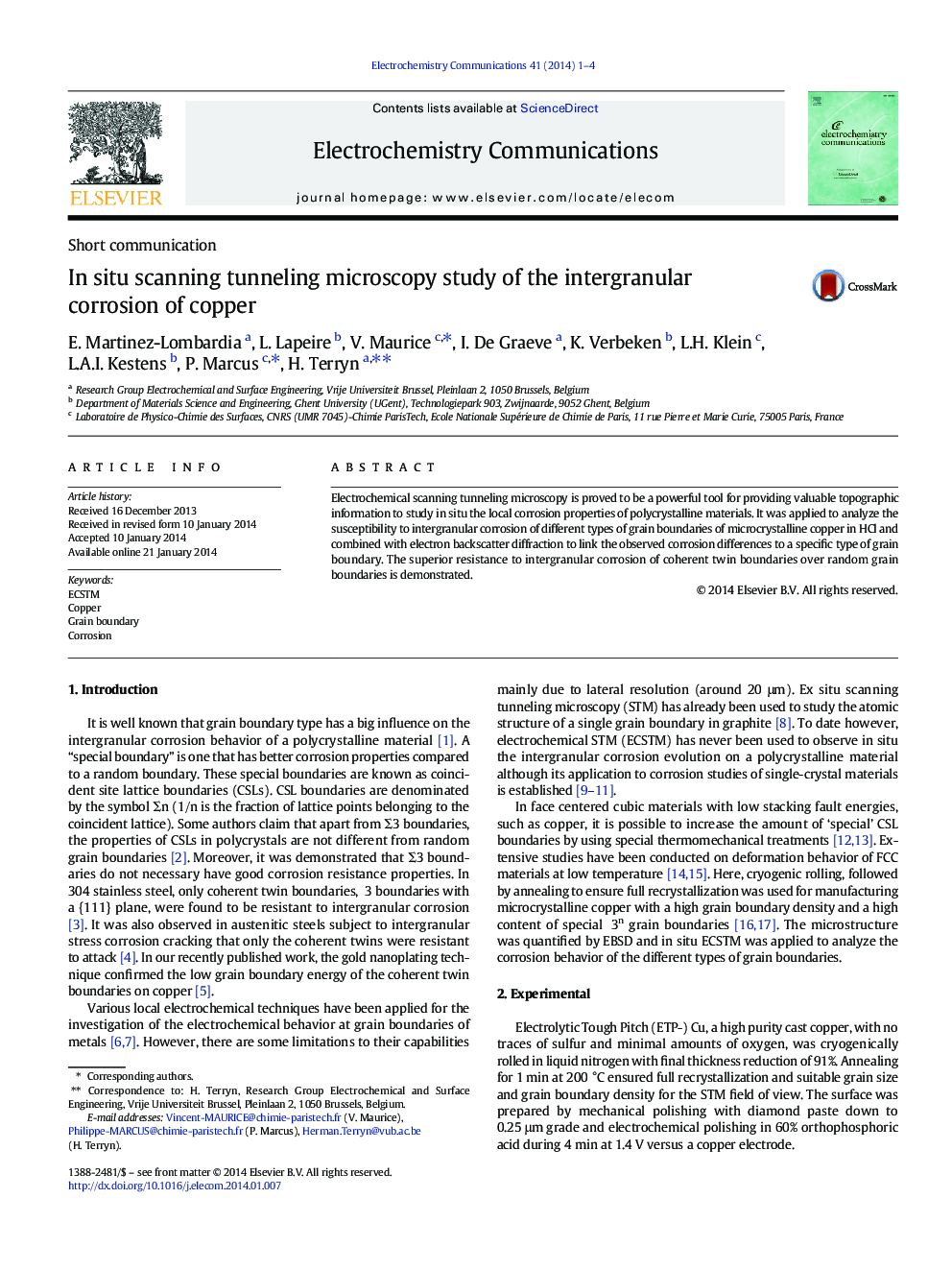| Article ID | Journal | Published Year | Pages | File Type |
|---|---|---|---|---|
| 179184 | Electrochemistry Communications | 2014 | 4 Pages |
•Cryogenic-rolling is used to obtain a microcrystalline copper, grain size 1µm.•ECSTM is used to study in situ the intergranular corrosion of microcrystalline Cu.•EBSD is used to link grain boundary type and susceptibility to corrosion.
Electrochemical scanning tunneling microscopy is proved to be a powerful tool for providing valuable topographic information to study in situ the local corrosion properties of polycrystalline materials. It was applied to analyze the susceptibility to intergranular corrosion of different types of grain boundaries of microcrystalline copper in HCl and combined with electron backscatter diffraction to link the observed corrosion differences to a specific type of grain boundary. The superior resistance to intergranular corrosion of coherent twin boundaries over random grain boundaries is demonstrated.
